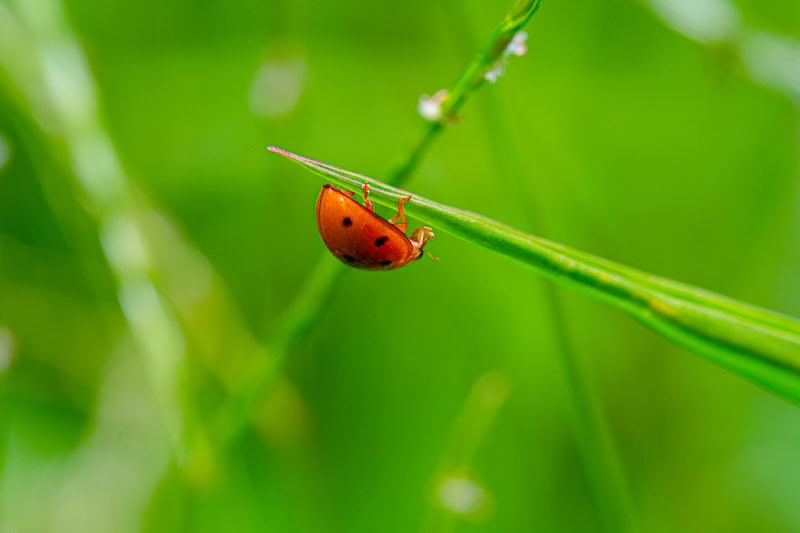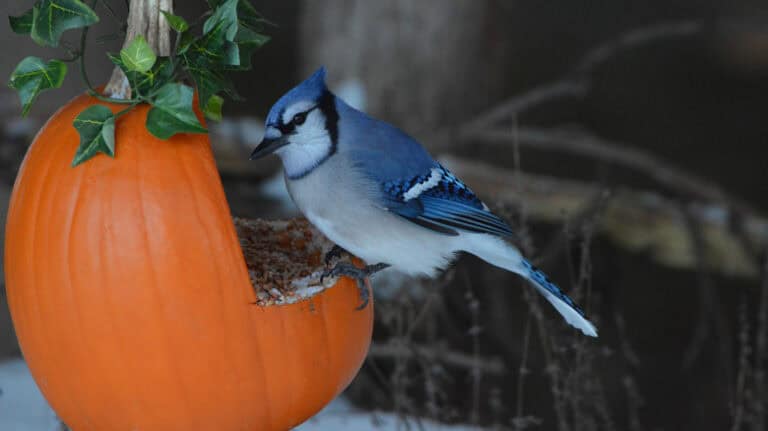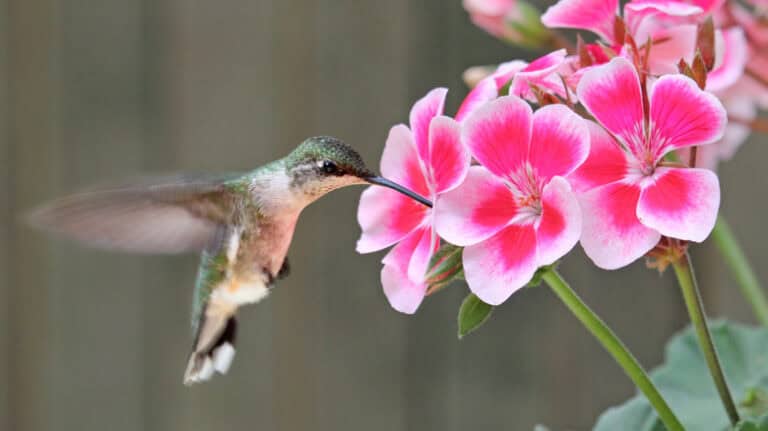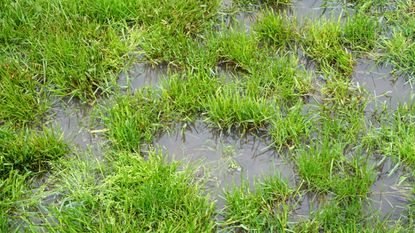How to Attract Wild Ladybugs and Why Your Garden Desperately Needs Them
Ladybugs, also known as ladybirds or lady beetles, are not just charming garden visitors but are also incredibly beneficial to the health of your plants. Their bright red, orange, or yellow shells and black spots make them easily recognizable, and their presence in your garden is a natural form of pest control. This article will delve into why you need ladybugs in your garden and provide detailed, practical steps on how to attract and retain them.
Why You Need Ladybugs in Your Garden
- Natural Pest Control: Ladybugs are voracious predators of aphids, mites, and other small insects that can cause significant damage to plants. An adult ladybug can consume up to 50 aphids a day, while their larvae can eat even more. By keeping these pests under control, ladybugs help reduce the need for chemical pesticides, promoting a healthier garden environment.
- Promote Plant Health: By controlling pest populations, ladybugs help your plants thrive. Aphids, for example, are notorious for sucking the sap from plants, which can stunt growth, spread disease, and even kill the plant. With ladybugs keeping aphid populations in check, your plants can grow more robustly and produce more fruit and flowers.
- Environmental Benefits: Encouraging ladybugs in your garden is an environmentally friendly pest control method. Unlike chemical pesticides that can harm beneficial insects, soil health, and water quality, ladybugs target only the harmful pests, leaving the rest of your garden ecosystem intact.
- Biodiversity: A diverse garden ecosystem is a resilient one. Ladybugs contribute to the biodiversity of your garden, which helps create a balanced and healthy environment. This biodiversity ensures that your garden can better withstand pests, diseases, and environmental stressors.
How to Attract Ladybugs to Your Garden
1. Provide Food Sources
To attract ladybugs, you need to ensure your garden has a plentiful supply of their favorite food: pests like aphids, mites, and other soft-bodied insects. While it might seem counterintuitive to want pests in your garden, having a balanced population is key to attracting and sustaining ladybugs.
- Aphids: These are the primary food source for ladybugs. Ensure you have plants that attract aphids, such as roses, milkweed, and nasturtiums.
- Pollen and Nectar: In addition to pests, ladybugs also need pollen and nectar, especially the adults. Planting flowers like marigolds, calendula, yarrow, and dill can provide these essential food sources. These plants will not only attract ladybugs but also support their lifecycle.
2. Plant Ladybug-Friendly Plants
Certain plants are known to attract ladybugs by providing both food and habitat. Consider incorporating these into your garden:
- Umbelliferous Flowers: Plants like dill, fennel, and cilantro produce umbrella-shaped flowers that are particularly attractive to ladybugs. These plants also produce nectar and pollen, which are crucial for adult ladybugs.
- Marigolds: These vibrant flowers are known to attract ladybugs. They also have the added benefit of repelling other pests, making them a great addition to any garden.
- Dandelions: Often considered a weed, dandelions are actually a great food source for ladybugs. Their flowers provide nectar and pollen, while their leaves can attract aphids.
- Alyssum: This low-growing plant produces clusters of small flowers that ladybugs find irresistible. It’s also a great ground cover, helping to suppress weeds and retain moisture in the soil.
3. Provide Water Sources
Ladybugs, like all living creatures, need water. Providing a shallow water source can help attract and retain them in your garden. A shallow dish or birdbath filled with water and a few stones for the ladybugs to perch on will suffice. Make sure the water is clean and changed regularly to prevent it from becoming a breeding ground for mosquitoes.
4. Create Shelters and Hiding Spots
Ladybugs need shelter to protect themselves from predators and harsh weather conditions. Providing a variety of hiding spots can make your garden more inviting.
- Mulch: A layer of mulch not only helps retain soil moisture and suppress weeds but also provides a great hiding spot for ladybugs.
- Leaf Litter: Leaving some leaf litter in your garden can provide ladybugs with a place to hide and overwinter.
- Rocks and Logs: Small piles of rocks or logs can create microhabitats where ladybugs can take refuge.
- Insect Hotels: These are structures designed to provide shelter for beneficial insects. You can either purchase one or build your own using natural materials like bamboo, wood, and straw.
5. Avoid Using Pesticides
Chemical pesticides are harmful to ladybugs and can deter them from settling in your garden. Even organic pesticides can be harmful if not used properly. To maintain a ladybug-friendly environment, opt for natural pest control methods such as:
- Companion Planting: Planting certain plants together can help repel pests and attract beneficial insects. For example, planting garlic or chives near roses can help deter aphids.
- Handpicking: Regularly inspect your plants for pests and remove them by hand. This method is time-consuming but effective, especially for small gardens.
- Neem Oil: This natural pesticide is derived from the neem tree and can be effective against pests without harming ladybugs. Use it sparingly and follow the instructions on the label.
6. Purchase Ladybugs
If you’re having trouble attracting ladybugs naturally, you can purchase them from garden centers or online suppliers. When releasing purchased ladybugs into your garden, follow these steps to increase the chances of them staying:
- Release in the Evening: Ladybugs are less likely to fly away if released in the evening when it’s cooler.
- Mist Plants with Water: Lightly misting your plants with water before releasing ladybugs can help them settle in more comfortably.
- Release Near Food Sources: Release ladybugs near aphid-infested plants or other food sources to encourage them to stay.
How to Maintain a Ladybug-Friendly Garden
Once you’ve attracted ladybugs to your garden, it’s essential to maintain an environment that will keep them coming back year after year.
1. Monitor Pest Populations
Regularly check your garden for pest populations. While ladybugs are effective at controlling pests, they need a steady supply of food to stay in your garden. If pest populations become too low, consider introducing other beneficial insects, like lacewings or parasitic wasps, to maintain a balanced ecosystem.
2. Continue Planting Beneficial Plants
Maintain a diverse array of plants that provide food and habitat for ladybugs. Rotate your crops and plant a variety of flowers to ensure a continuous supply of pollen and nectar throughout the growing season.
3. Maintain Clean Water Sources
Ensure your water sources are clean and accessible. Regularly change the water to prevent stagnation and mosquito breeding.
4. Minimize Pesticide Use
Continue to avoid chemical pesticides and opt for natural pest control methods. If you must use pesticides, choose those that are selective and less harmful to beneficial insects.
5. Provide Overwintering Sites
Ladybugs need places to hibernate during the winter months. Providing overwintering sites can help ensure a population of ladybugs in your garden year-round. In addition to leaf litter, mulch, and insect hotels, consider:
- Unmowed Areas: Leave some areas of your garden unmowed to provide a natural habitat for ladybugs and other beneficial insects.
- Straw Piles: Piles of straw or hay can provide an excellent overwintering site for ladybugs.
Conclusion
Attracting wild ladybugs to your garden is a natural and effective way to control pests, promote plant health, and support a diverse and balanced ecosystem. By providing food sources, planting ladybug-friendly plants, offering water and shelter, and avoiding chemical pesticides, you can create an inviting environment for these beneficial insects. Maintaining a ladybug-friendly garden requires ongoing effort, but the rewards are well worth it. Not only will you enjoy a healthier, more vibrant garden, but you’ll also contribute to the overall health of the environment.
Ladybugs are more than just charming garden visitors; they are an essential part of a thriving, sustainable garden. By following the steps outlined in this article, you can attract and retain these beneficial insects, ensuring that your garden remains a beautiful and productive space for years to come.







